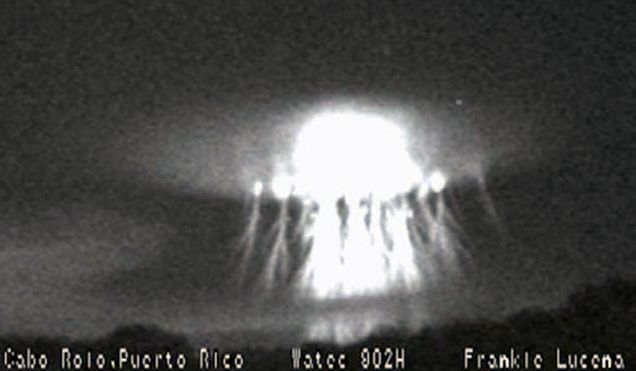
Above is original, below is negative.
Date of sighting: Sept 18, 2016Location of sighting: Caribbean
Its plain to see there is a giant jellyfish UFO hiding inside this could, and its soaking in the power of the electricity causing lightning all around it. Some ships deliberately create these storms just so they can feed off of them, regardless of the damage they may cause the public.
NASA is trying to call these sprites, but its a new field especially created to deliberately misinform the public about these UFOs so they can keep them secret. NASA was created not to find alien life, but to appease the publics curiosity, but giving them crumbs of information. Thus they can say they are doing their job, when in all reality, they are holding the public back.

Eyewitness states:This is a copy and paste from the Nasa website spaceweather.com: ‘A-BOMB’ SPRITE OVER THE CARIBBEAN: On Sept. 18th, Frankie Lucena of Cabo Rojo, Puerto Rico, photographed an enormous sprite over the Caribbean Sea. For a split-second, the sky was illuminated by a mushroom-shaped flash:Oscar van der Velde, a member of the Lightning Research Group at the Universitat Politècnica de Catalunya, explains what Lucena photographed: “This type of sprite is often called ‘jellyfish’ or ‘A-bomb,’ and ranks as the largest type of sprite in both horizontal and vertical dimensions,” he says. “It consists of a bright halo approximately 85 km above Earth’s surface surrounding sprite elements with long tendrils reaching down as low as ~30 km above ground level.” “This kind of sprite tends to be triggered by a very impulsive positive cloud-to-ground flash,” van der Velde adds.

The curious thing is, Lucena did not observe an instigating lightning bolt. Instead, just before the sprite appeared, he recorded a bright point-like flash of light. “Was it a cosmic ray hitting the camera?” wonders Lucena. Play the entire video to see the flash. Another possibility: The point-like flash could have been a cloud-to-ground strike mostly eclipsed by intervening clouds. If Lucena did photograph something new triggering a sprite, perhaps it shouldn’t come as a big surprise. The field is relatively new. Although sprites have been seen for at least a century, most scientists did not believe they existed until after 1989 when sprites were photographed by cameras onboard the space shuttle. There is still much to learn.